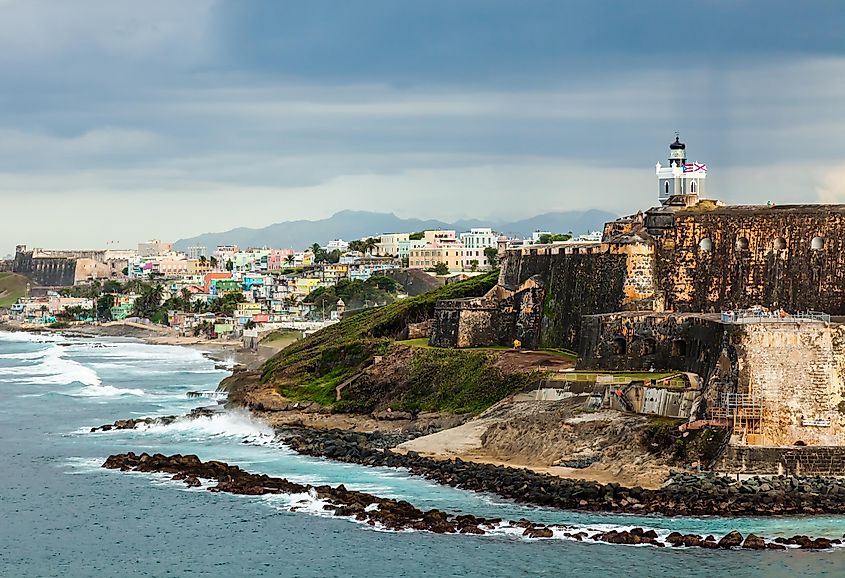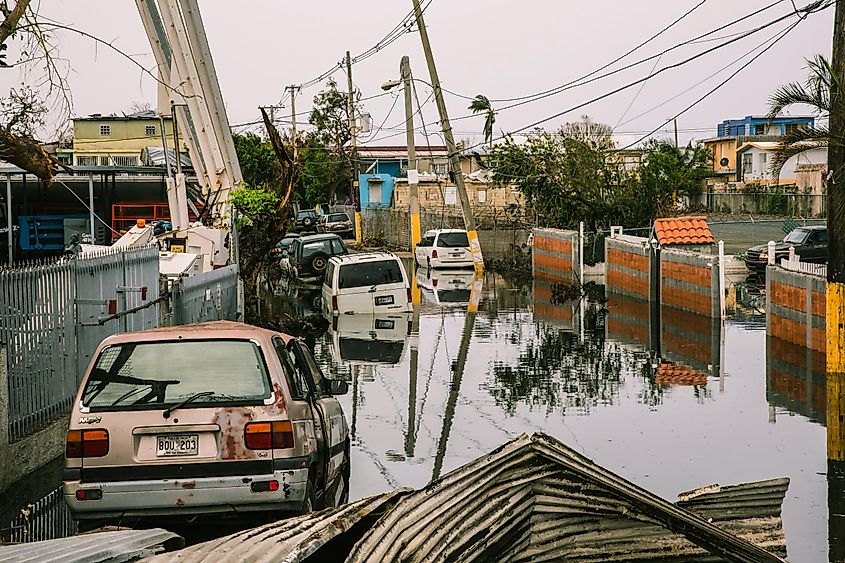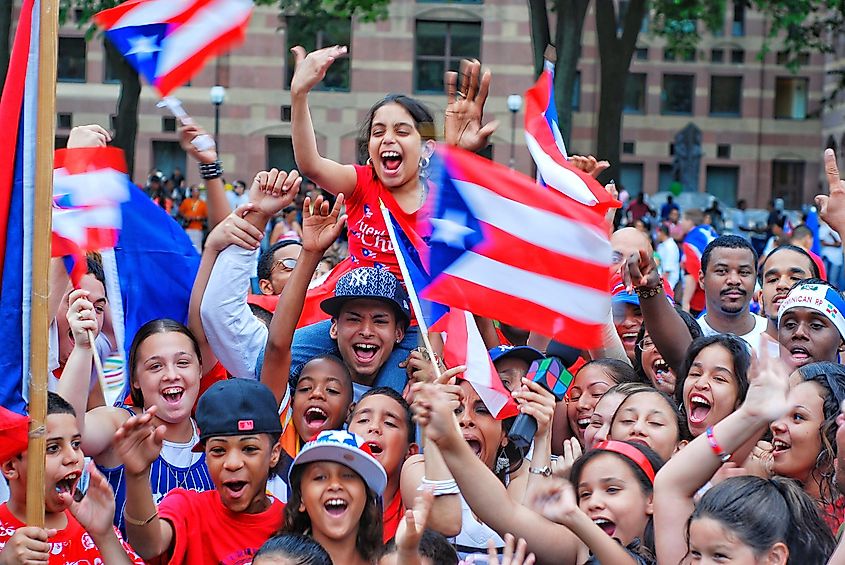Is Puerto Rico A Country?

- Puerto Rico is not an independent country, but an unincorporated US territory.
- The approximately 2.8 Puerto Ricans living on the island are US citizens, but cannot vote in US elections.
- Puerto Rico is self-governing, so the people of the island govern their own internal affairs.
- The US government is still responsible for providing external security to Puerto Rico, and maintains control over affairs related to currency, trade, and immigration.
Puerto Rico is not an independent country, but an unincorporated US territory. In fact, the island has never been an independent nation. It was originally inhabited by the Indigenous Taíno people who greeted Christopher Columbus when he made landfall on the island in 1493. Shortly thereafter, the island became a Spanish colony.
Puerto Rico remained under Spanish rule until the Spanish-American War of 1898, which climaxed with Spain ceding the island to the US along with other colonies like the Philippines. The inhabitants of the island were eventually accorded full US citizenship and were later granted political autonomy so that they could govern their own internal affairs while still being under US sovereignty. Today, Puerto Rico is referred to as a commonwealth in free association with the United States. Within the realm of Puerto Rican politics, there is an intense debate over the island’s future. Should Puerto Rico become a US state? Should it become an independent country? Or, should the island just keep its present status as a US territory?
History Of Puerto Rico

Puerto Rico was first settled by humans about a thousand years before the arrival of Europeans. At the time of European contact, the Taíno called the island Boriken or Borinquen, which means, “the great land of the valiant and noble Lord.” Columbus named the island San Juan Bautista. The first European settlement built there was known as Puerto Rico. Later, however, people started referring to the whole island as Puerto Rico, and eventually, the island of San Juan Bautista and the town of Puerto Rico switched names.
In 1508, Puerto Rico officially became a Spanish colony with the appointment of its first governor, Juan Ponce de León. It was not long afterwards that the Spanish began enslaving the Indigenous Taíno people. In 1511, the Taíno launched a revolt against the Spanish, known as the Taíno Rebellion, which was crushed by the Spanish. Slavery and the arrival of European diseases like smallpox all but decimated the Taíno population. At the same time, the Spanish imported slaves from Africa to work on the island. Puerto Rico would remain under Spanish rule for nearly four centuries.
In 1898, war broke out between the US and Spain. During the war, US forces invaded Puerto Rico. After the conflict climaxed, Spain ceded Puerto Rico to the US. Thereafter, the island was governed by the US military until 1900, when the US passed the Foraker Act, giving Puerto Rico a civilian government. In 1917, the US Congress granted all Puerto Ricans US citizenship. The island was made a commonwealth in 1952, giving it and its people self-governance, which it retains to this day.
Geography And Climate

Puerto Rico is about 170 km long and 60 km wide, making for a total area of 8,868 km2. The island is the third-largest in the US. Also considered part of Puerto Rican territory are 143 small islets, inlets, and cays. To the west of Puerto Rico is the Dominican Republic, and to the east are the Virgin Islands, shared by the US and the United Kingdom.
Puerto Rico has a tropical climate year-round. The average temperature on the island is 79 degrees Fahrenheit (26 degrees Celsius). The island’s rainier months are May through October. The climate of Puerto Rico is one of the reasons it attracts many tourists, but the island is also prone to hurricanes. In 2017, for example, Hurricane Maria blazed a path of destruction that laid waste to much of the island’s communications and power infrastructure, leaving the island isolated and without electricity for some time.
Government
As mentioned, Puerto Rico is an unincorporated US territory. Its people are US citizens, but they are unable to vote in presidential elections unless they reside in one of the 50 states. Hence, Puerto Ricans do not have any representation in the US federal government, with the exception of a so-called Resident Commissioner, who sits in the US House of Representatives, but has no voting rights, except in committees. Puerto Rico itself has its own government, which handles most of the island’s internal affairs. The US federal government still has control over some matters, such as defense, foreign relations, interstate and international trade, customs, immigration, citizenship, and currency.
Puerto Rico’s government resembles the US federal and state governments. The territory has a bicameral legislature with a House of Representatives and a Senate. The executive branch is headed by a governor. Both the members of the legislature and the governor are elected by Puerto Ricans to four-year terms. Puerto Rico also has its own Supreme Court. The government is based in the capital, San Juan, which is also the island’s largest city.
People

Puerto Rico is home to some 2.8 million people. Millions more Puerto Ricans also live in one of the 50 US states, especially New York and Florida. In fact, Puerto Ricans are known to emigrate from the island often, and the population has experienced a decline since at least 2005. In 2010, the US Census showed that more than 3.7 million people lived in Puerto Rico, so the population has fallen significantly since then.
The Puerto Rican population is both multiracial and multicultural. It includes people of European, Taíno and African descent. Almost 99% of Puerto Ricans define themselves as at least part Hispanic or Latino. Both English and Spanish are official languages in Puerto Rico, but Spanish is the most widely spoken language.
The Future Of Puerto Rico
One of the biggest issues in Puerto Rican society today is the future status of the US territory. Many of the island’s inhabitants would like Puerto Rico to become a fully-fledged state. Others would like to maintain the status quo. There are also some Puerto Ricans who favor outright independence for the island. Several referendums have taken place in Puerto Rico asking the island’s voters if they want the island to remain a US territory, become a U.S. state, or become an independent country. The most recent referendum took place during the US Presidential Elections of 2020, in which a slim majority voted in favor of statehood. But becoming a state would require approval by the US Congress, which has yet to be given.











